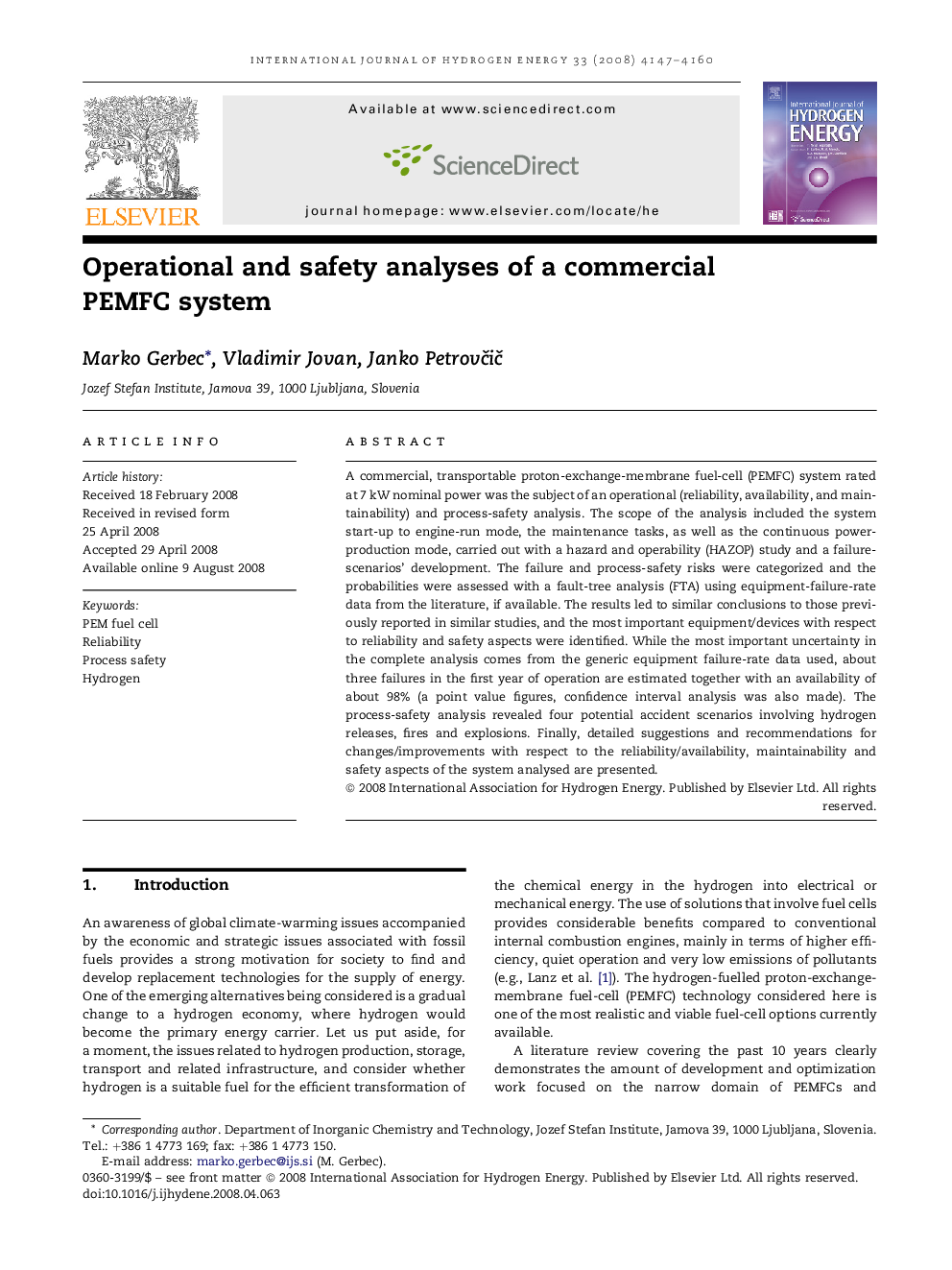| Article ID | Journal | Published Year | Pages | File Type |
|---|---|---|---|---|
| 1278863 | International Journal of Hydrogen Energy | 2008 | 14 Pages |
A commercial, transportable proton-exchange-membrane fuel-cell (PEMFC) system rated at 7 kW nominal power was the subject of an operational (reliability, availability, and maintainability) and process-safety analysis. The scope of the analysis included the system start-up to engine-run mode, the maintenance tasks, as well as the continuous power-production mode, carried out with a hazard and operability (HAZOP) study and a failure-scenarios' development. The failure and process-safety risks were categorized and the probabilities were assessed with a fault-tree analysis (FTA) using equipment-failure-rate data from the literature, if available. The results led to similar conclusions to those previously reported in similar studies, and the most important equipment/devices with respect to reliability and safety aspects were identified. While the most important uncertainty in the complete analysis comes from the generic equipment failure-rate data used, about three failures in the first year of operation are estimated together with an availability of about 98% (a point value figures, confidence interval analysis was also made). The process-safety analysis revealed four potential accident scenarios involving hydrogen releases, fires and explosions. Finally, detailed suggestions and recommendations for changes/improvements with respect to the reliability/availability, maintainability and safety aspects of the system analysed are presented.
